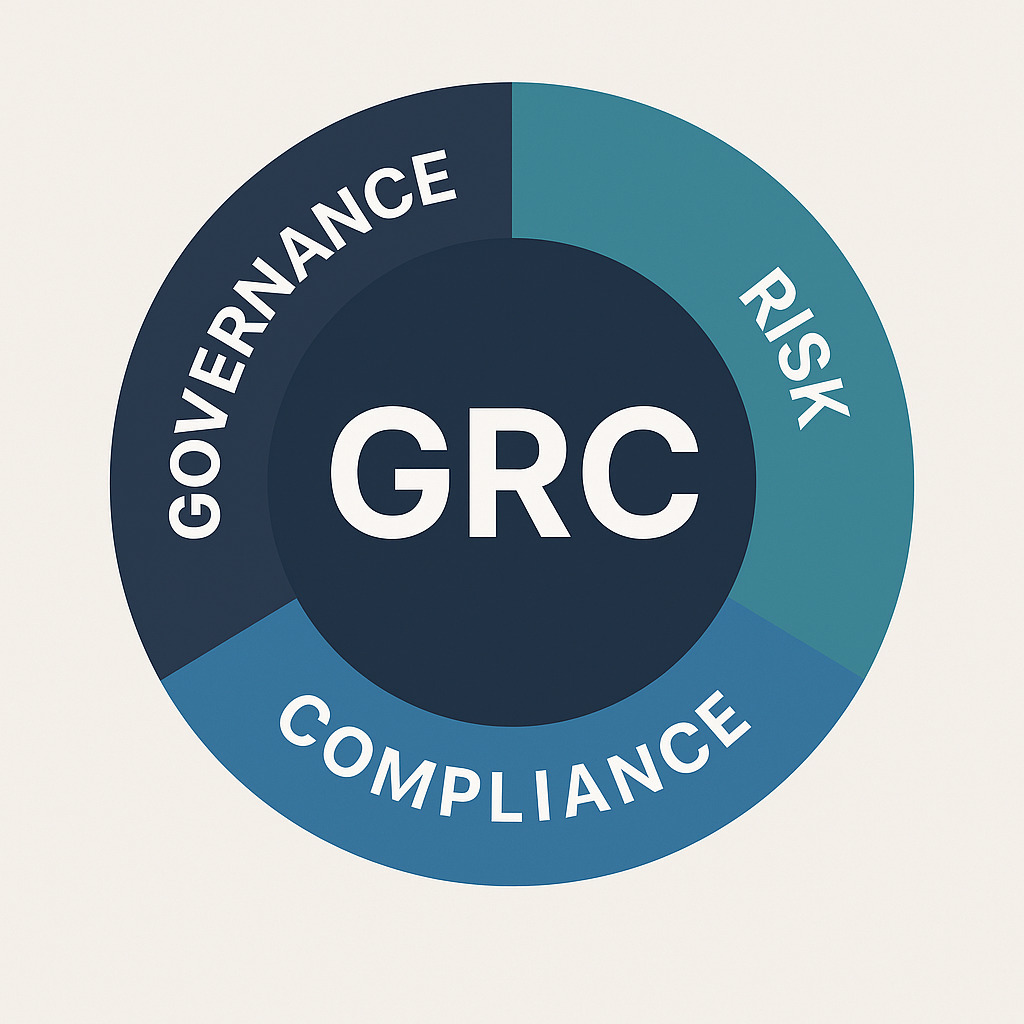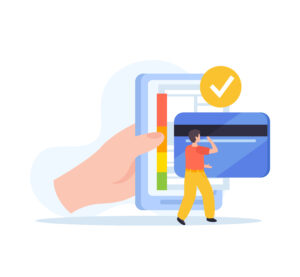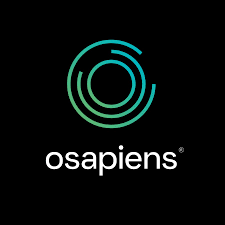The Future of GRC Platforms: AI, Automation, and Risk Prediction

Compliance officers face a problem that worsens every year. Financial institutions alone spend $61 billion annually on compliance, and 99% expect costs to rise. The volume of regulatory change has surged 84% since 2016, while budgets stay flat and headcount shrinks. Chief compliance officers spend 56% of their time identifying and assessing risk, another 52% monitoring compliance, and still find themselves scrambling when audit season arrives. The future of GRC platforms addresses this math problem by replacing manual processes with intelligent systems that detect risks continuously, respond to regulatory changes automatically, and prepare for audits without the usual chaos.
Traditional spreadsheet-based compliance creates more risk than it eliminates. Research shows that 91% of spreadsheets contain errors, and 60% of GRC users still manage compliance manually using Excel. Multiple versions proliferate across departments. Version control disappears. Audit trails vanish. When regulators ask for documentation, teams spend days hunting through email and shared drives. The future of GRC platforms solves these problems by centralizing controls, automating evidence collection, and maintaining a single source of truth that auditors can trust.
The Regulatory Whirlwind Accelerates
Three in ten compliance officers identify regulatory change as their top challenge for 2025. Data privacy laws vary by state, creating a patchwork of requirements. ESG reporting mandates expand globally, with 86% of large companies now disclosing sustainability information. The Department of Justice updated its corporate compliance evaluation guidelines in September 2024, emphasizing data-driven risk detection and measurement of compliance effectiveness. Financial services firms wrestle with anti-money laundering requirements. Healthcare organizations navigate HIPAA while managing third-party risks. Technology companies balance cybersecurity mandates with innovation timelines.
The challenge extends beyond reading new regulations. Compliance teams must interpret requirements, map them to existing controls, update policies, train employees, and prove effectiveness to auditors. 76% of managers manually scan regulatory websites to monitor changes. Twenty-three percent of security and IT professionals cite staying informed about new requirements as their primary challenge. The time spent on this work diverts attention from strategic priorities. The future of GRC platforms addresses this burden through automated regulatory tracking, which companies report cuts delays by 50%.
ServiceNow has built a dominant position by solving this problem at scale. The company serves 85% of Fortune 500 companies and posted $12.8 billion in subscription revenue with 20% year-over-year growth. Recent customer wins include ExxonMobil, Merck, Intuit, and Starbucks. Organizations already using ServiceNow for IT service management find integration straightforward, though teams managing complex ecosystems note limitations in flexibility. RSA Archer maintains 17.4% market share, serving more than 1,000 customers globally including over half the Fortune 500. The platform earns praise for handling large enterprises with complex requirements, though premium pricing restricts access for mid-market firms. MetricStream holds 5.4% market share and focuses on integrated risk management across financial services, healthcare, and technology sectors.
Spreadsheets Create Audit Nightmares
Audit preparation reveals the weakness of spreadsheet-based compliance. Teams relying on Excel report spending days assembling evidence, tracking down document versions, and recreating audit trails that should have existed all along. One compliance officer described the challenge as spending hours pulling data from fragmented systems, then more hours verifying its accuracy before handing anything to auditors. Spreadsheets lack robust audit trails, making it difficult to track who made changes and when. Sensitive business information stored in Excel files gets shared through email, creating security vulnerabilities and unauthorized access risks.
Organizations using manual processes face compound problems. Control testing happens periodically rather than continuously, creating gaps where violations go undetected. Policy updates require manual distribution and tracking of acknowledgments. Forty-four percent of organizations cite handling compliance assessments, undergoing control testing, and implementing policy updates as their top challenges. When multiple teams work from different spreadsheets, data conflicts emerge. Nobody owns the definitive version. Audit findings reveal discrepancies that damage credibility with regulators.
The future of GRC platforms replaces this dysfunction with centralized control libraries that link to frameworks like NIST CSF 2.0, ISO 27001, SOC 2, and GDPR. Instead of juggling multiple spreadsheets, compliance teams maintain a single source of truth connecting internal controls to compliance requirements. Automated evidence collection eliminates manual hunting. Companies implementing modern GRC platforms report 75% reduction in audit preparation time and 50% reduction in time spent on evidence collection. One chief information security officer noted that creating FedRAMP reports would have been unbearable without automated control mapping and evidence management.
AI Delivers Measurable Efficiency Gains
Artificial intelligence has moved beyond experimentation to deliver quantifiable improvements. Research shows generative AI tools identify regulatory changes with 90% accuracy while reducing compliance-related errors by 75%. Organizations implementing AI-assisted security automation report 62% improvement in compliance efficiency. These gains matter because compliance teams already operate lean. Sixty-one percent of respondents anticipate increased costs for senior compliance officers, driven by demand for skilled staff and additional headcount requirements.
Machine learning algorithms continuously monitor transactions, flag anomalies in financial reporting, identify policy breaches across data sources, and prioritize audit areas based on risk scores. JPMorgan Chase achieved a 50% reduction in false positives and a 30% increase in detection rates for actual fraudulent activities using AI-driven fraud detection. This precision matters beyond operational efficiency. Insurance carriers increasingly price coverage based on real-time GRC metrics, translating strong governance performance into premium discounts.
Natural language processing systems parse thousands of pages of proposed legislation, automatically mapping new requirements to existing control frameworks. 48% of GRC professionals actively implement AI for risk monitoring and reporting, 44% automate compliance workflows, and 38% strengthen threat detection and incident response. Early adopters report 42% improvement in false-positive reduction after embedding AI-driven compliance analytics. The technology excels at identifying correlations human analysts miss. A spike in employee departures correlated with unusual system access patterns signals insider threat risk. Subtle changes in vendor payment timing indicate supply chain stress.
The future of GRC platforms will rely on predictive analytics to anticipate problems before they materialize. Traditional systems document what happened. Intelligent platforms forecast what might occur and prescribe preemptive measures. This shift from reactive to proactive risk management represents the most significant evolution in governance technology. Compliance teams using predictive tools spend less time fighting fires and more time preventing them.
Automation Eliminates Repetitive Tasks
More than half of risk and compliance professionals spend their time on routine tasks. Manual compliance processes consume resources organizations cannot afford to waste. Policy adherence monitoring, control testing, regulatory reporting, and documentation generation absorb hours that skilled professionals could spend on strategic analysis. The future of GRC platforms addresses this inefficiency through end-to-end automation of repetitive workflows.
One company reported 95% policy adherence improvement after deploying AI to monitor internal compliance more closely. Organizations typically see 50% to 70% reduction in manual compliance tasks and 80% faster audit preparation within three to six months of implementation. These improvements compound over time as teams learn to leverage platform capabilities. Automated control testing runs continuously rather than quarterly. Regulatory reports generate automatically from centralized data. Documentation updates propagate across all relevant policies simultaneously.
Cloud-based deployment models accelerate adoption. While on-premise installations accounted for 54.2% of revenue in 2024, cloud platforms project 13.5% CAGR growth through 2030. Cloud architecture enables elastic compute resources for AI workloads, automatic software upgrades, and support for distributed teams. Organizations choosing between deployment models weigh data residency requirements against the operational benefits of cloud platforms. The future of GRC platforms will be predominantly cloud-native, with hybrid models serving firms bound by jurisdiction-specific data storage mandates.
Third-party risk management requires particular attention. Supply chains grow more complex each year. The Digital Operational Resilience Act took effect in January 2025, requiring EU financial entities to embed ICT risk frameworks covering incident response, resilience testing, and third-party oversight. Seventy-six percent of compliance leaders prioritize improving their approach to managing third-party risks in 2025. Automated vendor monitoring becomes essential for managing these obligations at scale. Platforms continuously assess supplier compliance, financial stability, and cybersecurity posture, alerting teams when metrics deteriorate.
Real-Time Visibility Transforms Decision Making
Executives need accurate compliance data to make informed decisions. Spreadsheet-based systems provide stale information. By the time compliance teams compile reports, the data reflects last month’s reality. Modern GRC platforms offer real-time dashboards showing current compliance posture, outstanding risks, and control effectiveness. This visibility matters when evaluating new market entry, assessing acquisition targets, or responding to board inquiries about risk exposure.
91% of companies plan to implement continuous compliance within five years, indicating a strategic shift from periodic checks to ongoing monitoring. This evolution requires technological infrastructure that traditional tools cannot provide. The future of GRC platforms enables always-on compliance through integration with operational systems. When an employee changes roles, access permissions update automatically and compliance policies adjust accordingly. When a vendor fails a security assessment, the platform flags dependent business processes and suggests mitigation actions.
Integration capabilities determine platform value. Compliance data flows from financial systems, network telemetry, human resources platforms, and external threat intelligence feeds. Pattern recognition algorithms identify correlations across these data sources. A CISO can view cybersecurity metrics alongside compliance status and vendor risk scores on a single dashboard. Business unit leaders see how regulatory requirements impact their operations without navigating multiple systems. Auditors receive standardized reports without requiring custom data extracts.
Organizations implementing integrated platforms report dramatic improvements in response times. When regulators issue guidance, teams can immediately assess impact across all relevant controls and policies. When audits begin, evidence packages generate automatically. When board members ask about specific risks, compliance officers provide answers backed by real-time data rather than best guesses. This responsiveness builds credibility and enables faster business decisions.
Implementation Requires Planning and Commitment
Despite compelling benefits, organizations face obstacles deploying AI-powered GRC systems. Integration with existing systems poses challenges for 48% of respondents. Lack of skilled talent to manage AI systems concerns 46%. Regulatory uncertainty around AI usage affects 43%. Data quality issues impact 37%. These barriers are real but surmountable with proper planning.
Legacy platforms and bespoke data models often lack APIs necessary for seamless integration. Organizations must choose between costly re-engineering projects or accepting suboptimal functionality. 69% of executives report their risk management processes are largely or partially siloed, creating blind spots and slowing response times. The future of GRC platforms must address integration challenges through open architectures and pre-built connectors to common enterprise systems. Vendors offering extensive integration libraries reduce implementation timelines and minimize custom development costs.
The talent shortage presents an equally pressing concern. Building and operating AI systems responsibly requires professionals combining technical knowledge with GRC domain expertise. This skill set remains scarce. Organizations investing in training existing compliance staff on AI literacy realize faster time to value than those attempting to hire fully formed AI-GRC specialists. Internal teams already understand business processes, regulatory requirements, and organizational culture. Adding technical capabilities proves more efficient than teaching GRC fundamentals to data scientists.
Data quality undermines AI effectiveness regardless of algorithmic sophistication. Incomplete datasets, inconsistent taxonomies, and siloed information repositories produce unreliable model outputs. Research shows 40% of AI initiatives fail due to poor data quality. Successful implementations begin with data governance improvements, ensuring clean, comprehensive inputs for machine learning models. Organizations should audit data sources, establish data ownership, standardize definitions, and implement quality controls before launching AI-powered compliance tools.
Choosing the Right Platform for Your Needs
43% of GRC professionals actively evaluate AI solutions, 35% plan for future AI potential, and 14% have already integrated AI into frameworks. This measured approach reflects appropriate caution. Rushing into production without adequate governance creates new compliance risks. Organizations should pilot AI capabilities in low-risk areas before broad deployment. Testing predictive models on historical data validates accuracy and identifies biases before relying on real-time outputs for critical decisions.
Platform selection depends on organizational needs, existing technology infrastructure, and resource constraints. ServiceNow appeals to organizations already using its IT service management tools, with contracts ranging from $50,000 to $500,000 annually based on employee count. RSA Archer suits large enterprises with complex requirements and budgets supporting premium pricing. MetricStream serves mid-market and enterprise customers seeking integrated risk management across multiple domains. Each platform offers distinct strengths. Buyers must evaluate integration capabilities, automation features, reporting flexibility, and vendor support quality.
Nearly half of GRC professionals identify AI adoption as both opportunity and challenge, acknowledging steep learning curves alongside transformative potential. Vendor selection should include proof-of-concept demonstrations using actual organizational data. Generic demos showcase capabilities but fail to reveal integration difficulties, data quality issues, or functionality gaps. Organizations should define success criteria before evaluation, measuring vendors against specific requirements rather than generic feature lists.
Gartner projects that by 2026, organizations with unified data and AI platforms will deploy AI applications 70% faster than those with fragmented architectures. This competitive advantage accrues to early adopters building foundational capabilities now. Delaying investment risks falling behind competitors who leverage AI to reduce costs, improve risk visibility, and respond faster to regulatory changes. The future of GRC platforms belongs to organizations recognizing that compliance technology has evolved from cost center to competitive differentiator, enabling faster decision-making, stronger governance, and more efficient operations in an increasingly complex regulatory environment.








